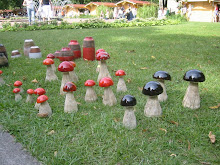Arts education is a rather nebulous concept in Hong Kong. Some see it as an entrance ticket to a good school. Many posit that Hong Kong should do more arts education because we need more arts talents and a bigger audience for the West Kowloon Cultural District.
The arts should bring about personal, economic and social benefits, in addition to the obvious cultural values. Quality arts education is conducive to the nurturing of creative and critical thinking, and communication skills. There is thus a strong linkage between arts education and the development of a knowledge economy that thrives on creativity and innovation. The arts also serve a tremendous social value, building social cohesion and identity. They are also powerful social inclusion tools, through empowering deprived communities. Policy makers should take an eco-system approach to arts education and audience development.
By international standards, Hong Kong has one of the highest percentages of children learning arts. However, Hong Kong has yet to reap the multiple benefits of the arts because there is limited understanding in different quarters of the society about the real value of the arts and what constitutes a ‘quality’ arts education. Despite the huge number of children doing arts classes, not all of them become ‘consumers’ of the arts.
Arts education is like foreign language learning. It does not necessarily take place in a classroom setting. If Hong Kong aspires to build a more arts literate society, we need to make the arts part of the everyday life of the populace. We are not only talking about out door or community arts but also our living environment – from the design of our city and buildings to the posters that adorn our streets and the media we consume every day.
In addition to a more arts rich environment, the arts groups also have a role to play in arts education - so long as they receive public funding. Indeed audience development should not be just about promotion. We need a holistic and integrated approach to reduce the entry barriers to the arts - from programming, pricing, venue to the audience experience. We should develop peoples’ interest in different arts forms – from the more popular arts to the classical arts. Policy makers and arts providers have to take a more audience-centric approach – to understand what make or break an enjoyable audience/visitor experience.
The West Kowloon Cultural District is not just an iconic landmark. It will serve as a powerful catalyst in propelling Hong Kong to become a creative metropolis. It will bring a better quality of life to Hong Kong people. The hardware aside, we should take a critical look into how arts education and audience development should be done in Hong Kong. It is not so much about the number of people taking arts classes or the number of arts and cultural performances. What is more important is the quality of our arts education and offerings. We also need a sustained communications campaign to promote the values of the arts and the real meaning of arts education, without which arts will continue to be perceived as something marginal.




No comments:
Post a Comment